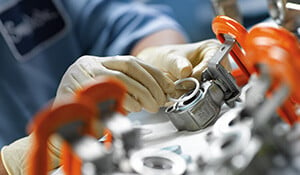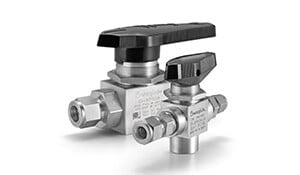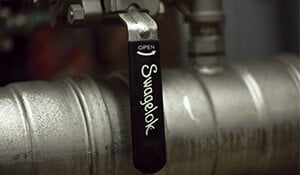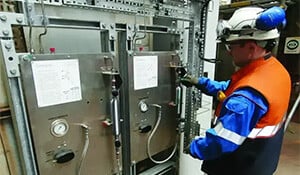Swagelok Netherland
Common Pressure Regulator Problems and Troubleshooting

How to Troubleshoot Common Regulator Problems Industrial fluid system processes rely on precise fluid temperature, flow, and pressure settings to operate as intended. Many key components, including pressure regulators (or pressure-reducing valves), are critical in maintaining your necessary process conditions.
Improve Maintenance with Valve and Hose Tags

How to Improve Your Maintenance Program with Valve and Hose Tags Imagine you are a technician performing maintenance on an industrial fluid system. You receive a new work order—several hoses require attention in a certain application in the system.
What is a Valve: Types & Functions

Valves: Basic Functions and Types of Industrial Valves Industrial fluid systems should be designed and built with the right components to reliably function as intended. Valves play an important role here, allowing operators to effectively control system fluid flow to best suit the application’s needs.
How to Select Valves for Industrial Fluid Systems

How to Select the Right Valves for Your Industrial Fluid System Valve selection is an important part of proper design and maintenance practices for industrial, piping, and instrumentation systems. Without the right valve for a specific application, operators could face improper or poor fluid system performance, increased downtime, and avoidable safety risks.
What is a Block Valve & Configuration Options for Engineers

How to Isolate Industrial Fluid Systems with Block Valves When performing industrial fluid system maintenance, safety is paramount. A single line’s pressure or flow inside represents a hazard to technicians changing a gauge or measurement device. This is why risk managers emphasize the necessity of isolating any fluid system line prior to maintenance.
Managing Supply Pressure Effect in Regulators

How to Manage Supply Pressure Effect (SPE) in Pressure-Reducing Regulators Used in Industrial Gas Systems Fluid system operators running a process line from a gas cylinder source may occasionally observe the phenomenon of outlet pressure increasing in a pressure-reducing regulator for no apparent reason. As the cylinder empties, the inlet pressure to the regulator decreases. Many skilled technicia …
Back-Pressure Regulators: How They Work & Tips for Analyzer Engineers

Back-Pressure Regulator Set-Up: Tips for Sampling System Engineers Back-pressure regulators play an important role in maintaining upstream pressure and protecting sensitive equipment in sampling systems used in many industrial facilities. To make proper use of a back-pressure regulator, however, sampling system engineers must be wary of a few common sampling system design mistakes. These include:
What is a Pressure Regulator & How to Choose

How to Choose a Regulator to Meet Your Fluid System Needs Pressure regulators play a crucial role in many industrial fluid and instrumentation systems, helping to maintain or control desired pressure and flow in response to system changes. It is important to select the right regulator to keep the system operating safely and as intended—the wrong choice can lead to inefficiency, poor performance, f …
Sample Cylinder Maintenance FAQ: What You Should Know

FAQ: What You Should Know About Sample Cylinder Maintenance In any industrial environment where grab sampling is a part of regular operations, keeping your sample cylinders in safe working condition is a necessity. Damaged or malfunctioning cylinders can present a safety issue for staff, and may compromise the accuracy and integrity of your sampling practices. All of this makes regular, proactive …
The 5 most common revelations experienced in process analyzer system training

A process analyzer sampling system is one of the most challenging systems within your plant. Not only is it challenging to design, it’s also challenging to operate accurately. If you make one minor adjustment here, you may end up having to make a major one elsewhere. It’s no wonder Swagelok gets so many good questions, and attentive trainees, during our process analyzer sampling system (PASS) trai …